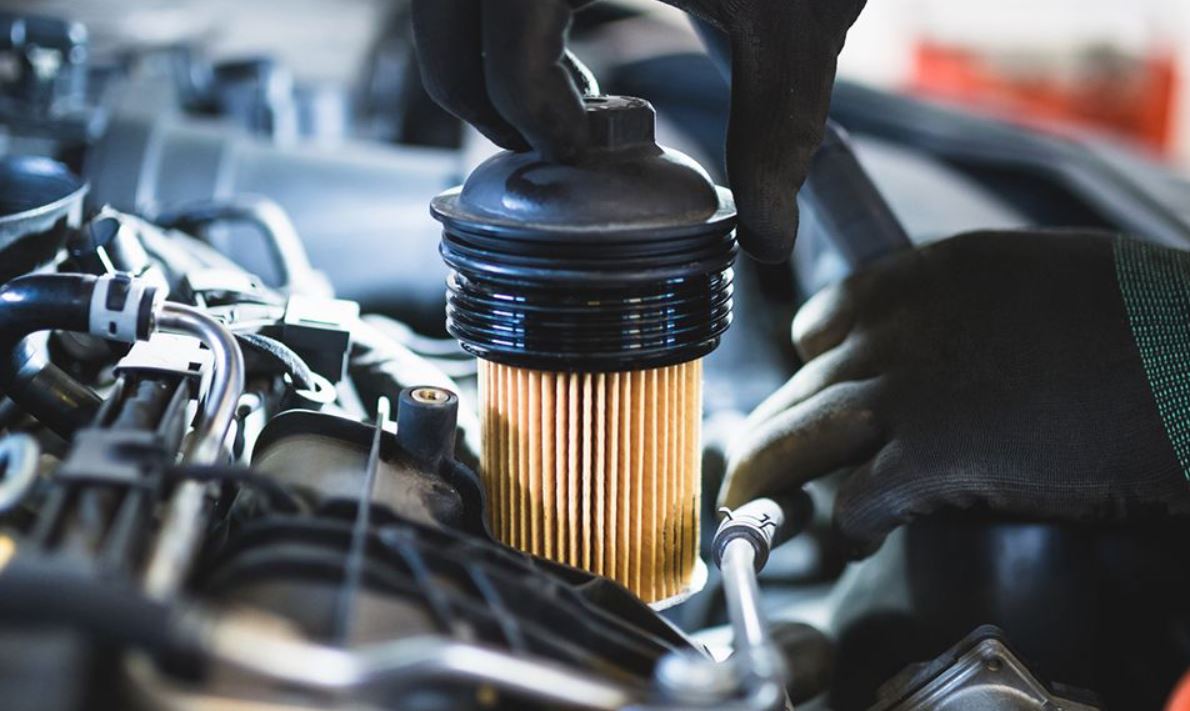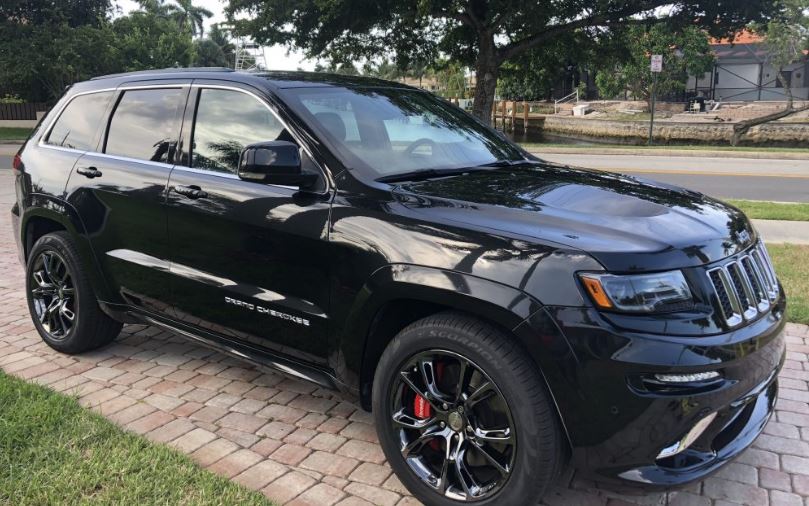An oil filter is a device that filters out impurities from engine oil, transmission fluid, lubricating oil, hydraulic oil, or some other type of liquid. Oil filters are primarily used to protect against contamination of the liquid being filtered and prevent damage to mechanical parts caused by abrasive particles suspended in it. They also help maintain the proper viscosity of the fluid being filtered. In addition, they reduce the noise produced by the engine.

The most common oil filters are cartridge style, where the filter element is held within a metal housing, and spin-on, where the filter element screws directly inside the tank. Some older designs use cotton gauze, paper, or felt elements. In this article, we are going to discuss different types of oils filters
History of Oil Filters
The earliest automobiles had no oil filters and needed frequent oil changes. The oil was dirty and often contaminated with grit, dirt, and rust. Early vehicles used a simple screen called a “mesh sieve” to prevent this, allowing oil to pass through while retaining impurities such as sand, gravel, metal shavings, and other debris. These screens became known as “oil filters”.
In 1892, George W. Perkins invented a device consisting of a cylindrical container with a wire netting attached to one end. In 1893, he applied for a patent for his invention, which was granted on February 24, 1895. By 1900, several companies were manufacturing similar devices under different names. One of those companies was Purolator Incorporated, founded in Toronto, Ontario, Canada.
How do oil filters work?
To keep contaminants out of the engine. However, early cars had poor-quality oil, and even today, many modern engines are designed to run without oil. Oil filters became necessary when manufacturers discovered that high-viscosity oils could cause damage to the engine. Initially, oil filters were placed on the end of the crankshaft, where they remained during operation. This design worked well until the introduction of the first mass-produced passenger car, the Ford Model T.
The Model T used a hydraulic lifter camshaft actuated valvetrain. During normal operation, the valves opened and closed rapidly, causing significant friction. As a result, the valves are often stuck open, allowing oil into the cylinder head area.
In addition, the pressure wave generated by the rapid opening and closing of the valves caused oil to spray out of the valve guides. This resulted in large amounts of carbon deposits on the piston rings. These deposits eventually clogged up the ring grooves, preventing proper sealing.
The problem can be solved by placing the oil filter directly on the crankshaft. Outside the filter is a metallic can with a gasket for sealing which lets it be securely gripped against the engine’s mating surfaces. The can’s bottom plate houses the gasket and is punctured by holes inside the gasket. The center hole threads for a connection to the filtering assembly located on the motor block. Inside the container is the material for filtering, typically made of synthetic fiber. The engine’s oil pump moves direct oil to the filter, accessed via holes located around the bottom plate. The dirty oil is then transferred (pushed by tension) through the filter’s media and then to the hole in the center, where it enters the engine.
Early oil filter designs
The earliest oil filters were designed around a replaceable element that fits into a metal housing. When you changed the filter, you had to remove the entire unit from the engine. It required some skill and tools to perform, and it could take several hours to change the filter.
By the mid-20th Century, spin-on filters became popular. They were easier to use because they didn’t require tools to install and remove the filter. However, they still needed to be replaced every 3000 miles or so.
Nowadays, many manufacturers offer both types of filters. Some even combine the benefits of both designs. In either case, the oil filter element is self-contained within the housing. You unscrew the old filter and screw on the new one.
Today’s oil filter types
There are many different kinds of oil filters out there. Some are designed specifically for heavy-duty applications, while others are for everyday driving. High-performance filters often cost more than standard filters because they are engineered to provide better filtration. Race filters are built to withstand extreme conditions like racing. Synthetic oils require special filters because they don’t break down easily. And some filters come with warranties that cover replacement costs if something goes wrong.
Types Of Oil Filters
There are many different types of oil filters for cars on the marketplace and oil filtration sizes. Still, they all play a critical role in protecting the health and longevity of a car’s engine and ensuring that your vehicle’s oil is as clean and pure as possible before making its way through the engine block.
Which car is the oil filter best suited for your specific make or manufacturer? Here we’ll go over the most popular options, including what size you’d want to be based on your particular car.
Full-Flow Oil Filter
A full-flow oil filter removes contaminants from all of the oil in a vehicle’s engine. Unlike partial-flow filters, full-flow filters allow oil to pass through during normal use. They’re most commonly found in older cars because they’re easier to install and help keep engines running smoothly even in cold climates.
Secondary Oil Filter
Some automakers install a secondary oil filtration system to help protect the engine. This type of filter removes contaminants that the primary filter may have overlooked. A secondary filter cleans up to 90% of the motor oil, while the main filter cleans up to 80%.
The secondary filter is designed to work alongside the full-flow filter, so it doesn’t replace it. Instead, it supports the engine’s full flow of oil. If you’re replacing your current filter, consider getting one with both types of filters.
Cartridge Oil Filter
The most common type of oil filter is called a “cartridge.” These are often used in cars because they’re relatively inexpensive and easy to replace. They contain a plastic housing containing a tightly packed mass of paper fibers. As oil passes through the housing, the particles become coated with dirt and debris, and the filter becomes clogged. When you change the filter, you pull out the old one and put in a new one.
There are various cartridges, including pleated paper, foam, cotton, and polyester. Some are designed to fit into the car’s oil pan; others are meant to sit inside the oil pump. There are even some models that look like a piece of jewelry.
In addition to being cheap, cartridge filters are generally very reliable. However, there are exceptions. A few years ago, Ford recalled about 2 million vehicles due to problems with the seals around the oil filter.
Spin-On Oil Filter
As with the cartridge filter, the spin-on filter is one of those items you probably don’t think about much. But it plays a vital role in keeping your vehicle running smoothly. Spin-on comes in three varieties: stainless steel, aluminum alloy, and plastic. They feature a steel canister paired up with a paper element. All spin-on require a wrench to install, but some models are designed specifically for easy removal and replacement.
Spinner Oil Filter
A spinner oil filter is one of those things you never thought about. But now that you know what they do, you’ll probably want one. These devices use centrifugal force to separate particles from your vehicle’s oil. Spinner filters come in different sizes, depending on how much oil you put into your engine.
Magnetic Oil Filter
A magnetic oil filter works by attracting metal particles from the engine’s lubricating oil. Once it collects enough debris, the filter becomes clogged and needs to be cleaned out. This process requires no tools or special equipment, just some elbow grease and a screwdriver.
The most common magnetic oil filter type is a “magnetic screen.” These filters trap large amounts of dirt and debris while allowing clean oil to pass freely. A magnetized plate inside the filter attracts iron and copper particles, while the rest of the filter acts like a sieve.
Another popular option is called a “magnet roller,” which looks like a miniature version of a drum sander. It works similarly to the magnetic screen, except it uses magnets to attract small pieces of metal.
A third option is called a “pump-out unit,” which uses centrifugal force to separate dirty oil from clean oil. In this case, a spinning impeller creates a vortex that pulls dirt into a drain tube. Clean oil flows around the outside of the device.
If you’re looking for something different, there are several options. One example is a “hydrocyclone,” which resembles a cone-shaped funnel. As the oil spins through the center of the device, the heavier contaminants fall to the bottom, where they collect in a reservoir. The remaining oil passes through a hole in the base of the unit.



